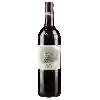
Caves Saint-PierreLes Sept Maillets Bordeaux
In the mouth this red wine is a powerful with a nice balance between acidity and tannins.
This wine generally goes well with poultry, beef or veal.
Taste structure of the Les Sept Maillets Bordeaux from the Caves Saint-Pierre
Light | Bold | |
Smooth | Tannic | |
Dry | Sweet | |
Soft | Acidic |
In the mouth the Les Sept Maillets Bordeaux of Caves Saint-Pierre in the region of Bordeaux is a powerful with a nice balance between acidity and tannins.
Food and wine pairings with Les Sept Maillets Bordeaux
Pairings that work perfectly with Les Sept Maillets Bordeaux
Original food and wine pairings with Les Sept Maillets Bordeaux
The Les Sept Maillets Bordeaux of Caves Saint-Pierre matches generally quite well with dishes of beef, veal or game (deer, venison) such as recipes of stuffed peppers, veal with chestnut and pietra (corsican beer) or duck stew with cahors wine.
Details and technical informations about Caves Saint-Pierre's Les Sept Maillets Bordeaux.
Discover the grape variety: Len de l’El
Len de l'El Blanc is a grape variety that originated in France (Tarn). It produces a variety of grape specially used for wine making. It is rare to find this grape to eat on our tables. This variety of grape is characterized by large bunches of grapes of medium size. The Len de l'El Blanc can be found grown in these vineyards: South West, Cognac, Bordeaux, Armagnac, Rhone Valley, Provence & Corsica.
Informations about the Caves Saint-Pierre
The Caves Saint-Pierre is one of of the world's great estates. It offers 83 wines for sale in the of Bordeaux to come and discover on site or to buy online.
The wine region of Bordeaux
Bordeaux, in southwestern France, is one of the most famous, prestigious and prolific wine regions in the world. The majority of Bordeaux wines (nearly 90% of the production Volume) are the Dry, medium and Full-bodied red Bordeaux blends for which it is famous. The finest (and most expensive) are the wines of the great châteaux of Haut-Médoc and the right bank appellations of Saint-Émilion and Pomerol. The former focuses (at the highest level) on Cabernet Sauvignon, the latter on Merlot.
The word of the wine: Biodynamics
Biodynamic farming method initiated by Rudolf Steiner which forbids all chemical treatments based on synthetic products. Biodynamics is based on the interaction between the movements of the planets and the development of plants and uses preparations based on organic and mineral materials.














